Maximizing Europe – 2006 and 2008
It was a conundrum. We wanted to travel by car through Eastern Europe, however most car rental companies refused to let us drive their vehicles into several countries, particularly Czechoslovakia and Slovakia, because of the high crime rate.
At the time cars were frequent targets and, facing so many obstacles, we decided to go back to the drawing board. Travelling by train was an option but having grown up in Britain, using the excruciatingly unreliable British Rail system, I had an inbuilt doubts about any train in Europe running on time.
Our travel agent suggested we go by bus. I was sceptical.
But after a great deal of research, and with a large dollop of doubt, we held our noses and booked a 15-day bus tour around Eastern Europe with Insight Vacations, a top-rated tour company. And crossed our fingers. Tightly.
After 30 years of true adventure-style travel around the globe, we were about to experience our first group tour.
The idea of travelling with a large group of people, and the thought of being crammed together as a captive audience on a bus, didn’t thrill us – but it turned out to be one of the best decisions we have ever made.
The 1,500 mile bus trip was terrific. It was a luxury bus, comfortable and had plenty of room for the 25 passengers on board. We rotated seats every day, and liked most of our fellow passengers enough that we are still in touch with several, ten years later.
I learned a lot about travelling during that trip and have decided a bus tour can be a practical way of what I call MAXIMIZING Europe.
The three main reasons it worked as well as it did was the turnkey convenience of checking into a hotel, quickly and efficiently, right in the centre of a city; expert guides throughout; and a really good bang for our buck. Also, there was a good balance between organized tours and plenty of free time.
The bus tour saved us vast amounts of time. Within 15 minutes of arriving at any destination, we were checked in, changed and out exploring the wonders of the city we were in. For example in Budapest, our five-star hotel was a short walk from the spectacular parliament buildings and the Danube river.
Another advantage was we quickly realized cars were a impediment in many European cities because of the challenge of navigating complicated routes on narrow, often one-way streets. Not to mention the prohibitively expensive parking.
We soon discovered it was a practical way to travel. Although, to be fair, we haven’t done a bus trip since. However we will certainly consider it again.
We started in the historic and pristine city of Vienna, where we indulged in the spectacular Sacher Torte, then on to Budapest, once described as the Little Paris of Middle Europe. The 1,000 year old capital of Hungary has two sides – Buda and Pest, stretching along the banks either side of the Danube. It is the dynamic Pest side that boasts the largest parliament building in Europe and spectacular riverside promenades.
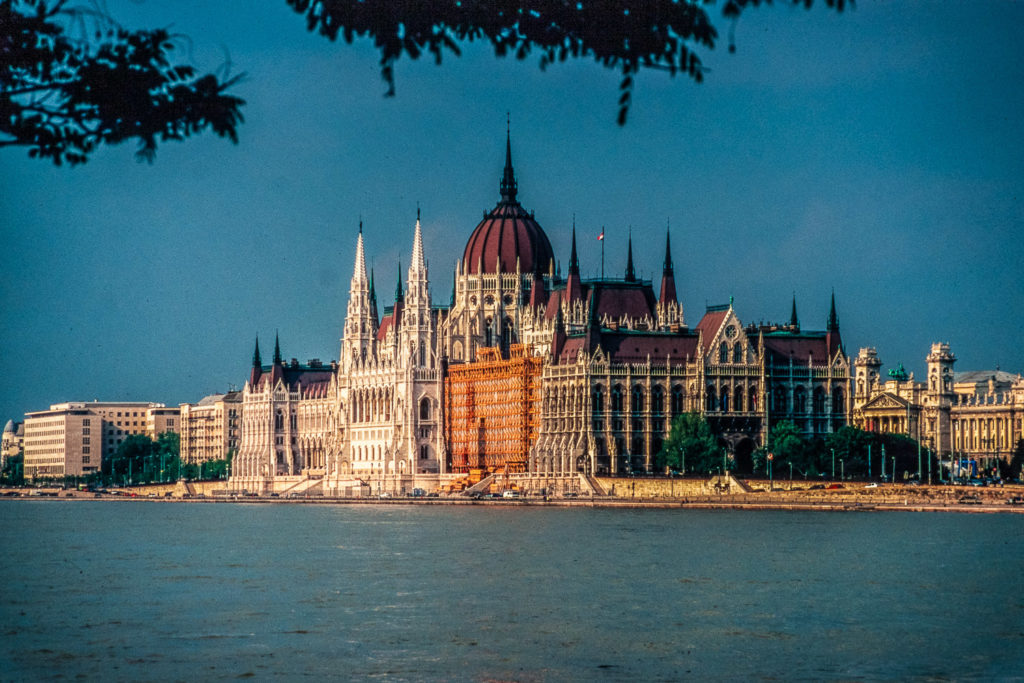
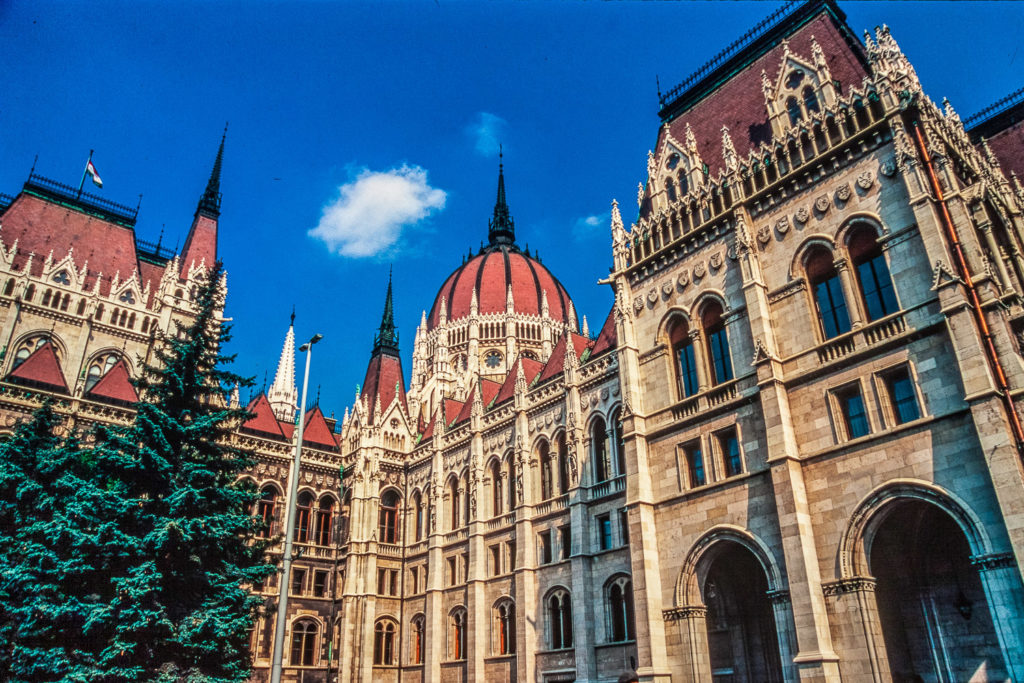
Krakow was a huge surprise: beautiful, with stunning architecture, primarily because the old town had survived the Second World War bombing and is now a UNESCO world heritage site. For centuries it was the seat of Poland’s kings. Wawel Hill, the castle and the cathedral are must-sees.

Our tour also included a lengthy visit to the Nazi concentration camp of Auschwitz. The weather was glorious, but our mood was distinctly sombre as we walked the paths of what had been hell on earth. Is it possible to really understand what Auschwitz was? Going through the main gate, we were aware that this was where one point three million people walked to their deaths. It made us numb.
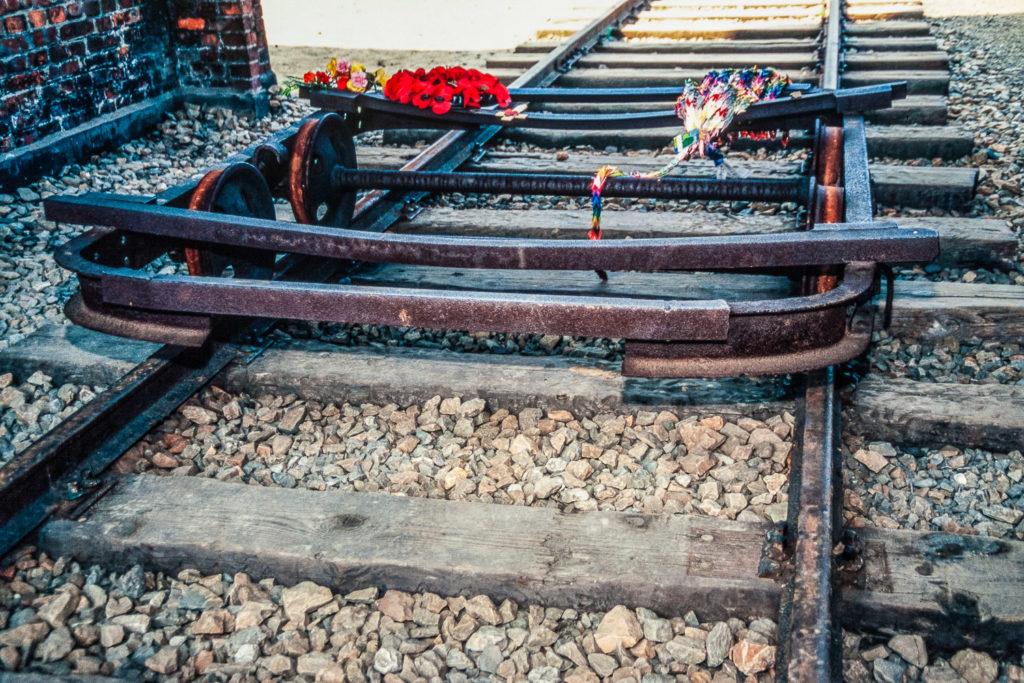


It was surreal and disturbing to see the reminders (and remainders) of the Nazi’s orchestrated, horrific, and unimaginable killing grounds now in peaceful, almost park-like surroundings.
The bus tour continued on to Warsaw, which had been almost totally destroyed during World War Two. Again, plenty of time to ourselves and a chance to visit the sites of the old Jewish ghettos. Next, on to Berlin, a plethora of sights including the Brandenburg Gate, the rebuilt Reichstag, with the breathtaking dome, designed by architect, Norman Foster, and the Berlin Wall Memorial and Checkpoint Charlie.



And to me, perhaps the most stunning of all, was Prague. The city has blossomed since the Velvet Revolution after the collapse of the Iron Curtain, but its unique character remains unchanged. The amazing St. Vitus’ Cathedral set inside the 1,000 year old Prague Castle and the spectacular old town square with its incredible astronomical Clock will stay with me forever, along with walking back and forth over the famous old Charles Bridge across the Vitava River.






Back to Vienna, and the tour over, we flew to Stockholm and found a different way to maximize Europe – a three-week adventure by train through much of Western Europe.
We put in 15-hour days to take full advantage of my five-week vacation. Stockholm is like no other capital in the world, built on 14 islands. It’s nautical lifestyle is evident everywhere. The city, dating back to the 13th Century, is suffused in history, particularly in Gamia Stan, the Old Town. In fact, we enjoyed Stockholm so much, we have returned on several occasions.


From Stockholm, we travelled by overnight train to spend a couple of days in Oslo, again a city with a wealth of nautical history….especially the Viking Ship museum. And perhaps our favourite site was the Vigeland Park, a sculpture park that displays the work of one artist, Gustav Vigeland. We had the good fortune to be in Oslo on the May 17, which is their National Day. We were treated to a family oriented parade that celebrated their culture, costumes and especially their children. And everyone we met included us in their festivities.
Then back via Copenhagen and Hamburg to Amsterdam, one of our favourite cities in Europe. Like Stockholm, we have returned again and again and always long for more. Walk, cycle or cruise in a canal boat, Amsterdam serves all the senses.We found a delightful hotel, within walking distance of many of the places we wanted to visit. In fact, we pre-booked decent hotels just a block or two from the main railway station in all our destinations, so we could easily wheel our suitcases to them.



Finally we took a train to Luxembourg and then Belgium (I can still taste the hot chocolate served at a cafe in the Grand Place square) for a couple of days each and finished in Paris, where Carol-Ann had attended college some years earlier. We spent five days enjoying springtime in Paris before flying home.




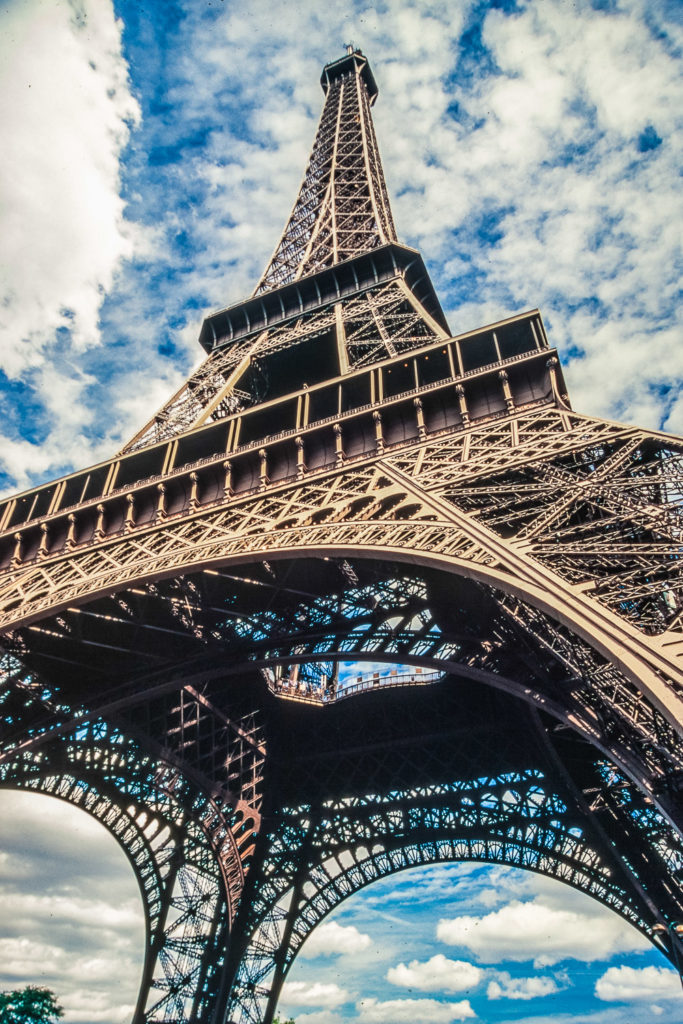
And remarkably, despite my experiences with British Rail when I was living in England, when barely a train ran on time or made a connection, every single one of the 15 train trips we made was precisely on time. In Hamburg we had three minutes to make a major connection, and we did. It reinforced our view that travelling Europe by bus and train allows you to see a lot and take advantage of almost every minute, as you travel in a fairly leisurely fashion through fascinating towns and amazing countryside.
In total we travelled through 14 countries, and many of Europe’s most interesting cities, without the hassle of driving, navigating and parking. I figure we saw at least twice as much as we would have done if we had done it by car – and for about half the price.
Three years later, in 2009, we did hire a car to drive through Spain, Portugal, Andorra and Southern France to Monaco – but that was largely because the logistics of using buses and trains made it impossible to go where we wanted, when we wanted.
But it was certainly NOT hassle-free. Even with a GPS we wound up lost on many occasions and I managed to scrape the side door of the large Alpha Romeo. the car hire company insisted on renting us. That was in the narrow, but beautiful streets of Seville.
We ended the drive in Barcelona, one of our favourites cities, with a sense of relief! In fact, as we were heading to our hotel our GPS was confused by various one way systems so we made the brave decision to cross five lanes of traffic to avoid more mistakes – Carol-Ann waving a Canadian flag out of the window as a surrender to my lousy driving.
Looking back on that part of our trip, starting in Madrid, Barcelona was the highlight with the fantastical Sagrada Familia church and other modernist landmarks designed by Antoni Gaudi which dot the city. Our hotel was just a short walk from Las Ramblas, the most famous walking street in the city.



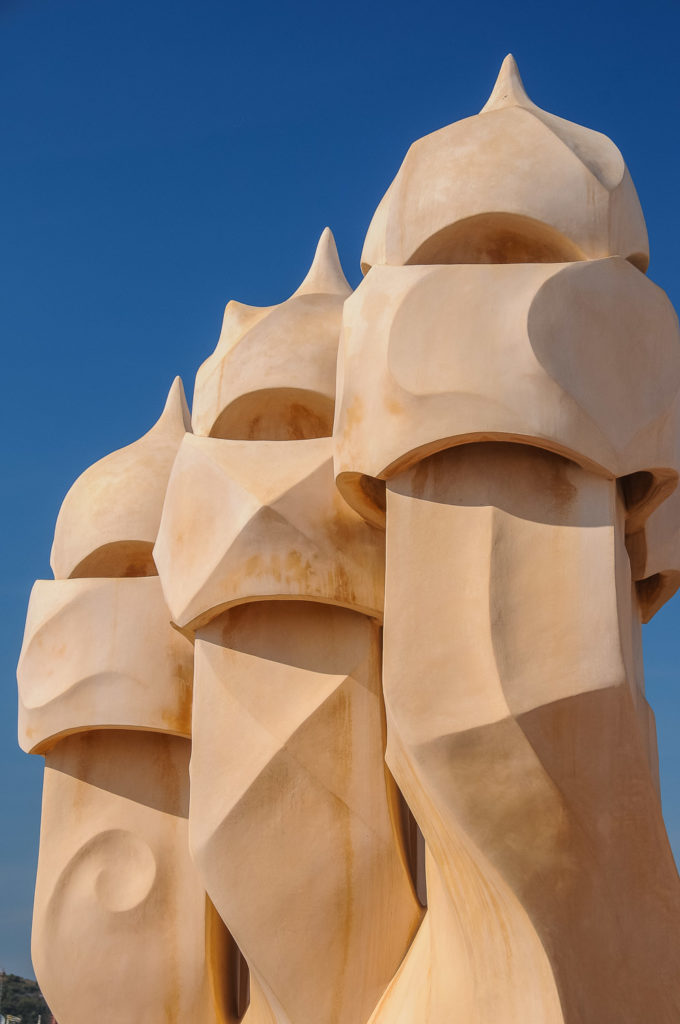
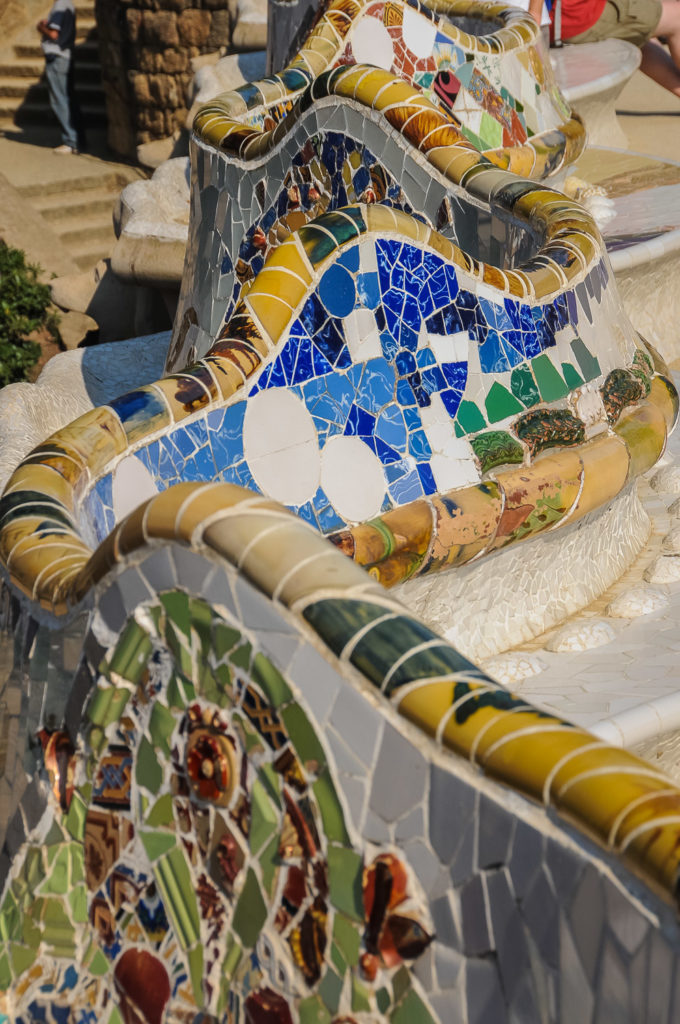

We also loved and recommend visits to the Alhambra (book ahead!), the palace and fortress of Moorish monarchs in Granada; Sevilla – a stunningly spectacular city, worthy of several days; the university town of Salamanca; not to mention Segovia and its beautiful aqueduct at dusk!
We also included Lisbon, and if you visit that city be sure to invest a day visiting Sintra with its ancient castles and colourful palaces. And a meal at any of the restaurants in the Docas De Santo Amaro area. Old warehouses of the Port of Lisbon have been restored and the restaurants and bars all have waterfront views of the marina and bridge. And superb seafood.
On that same trip we enjoyed the castle town of Carcassonne and the region around Arles and Avignon, in Provence. Both places we intend to revisit. And an easy day trip to Monaco, which earns its reputation for opulence.


As our reward, after the challenge of driving, we tried a different kind of transportation after our Iberian trip – a Mediterranean cruise. And, to maximize the cruise we used the 1200 passenger ship as a water taxi around the Mediterranean. See my next blog.



